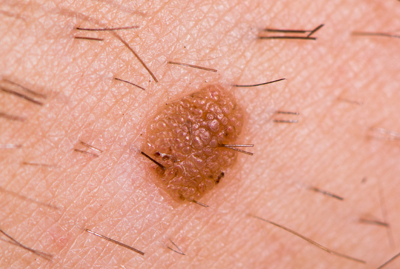Seborrheic Keratosis
Seborrheic keratosis (SK) are very common and can appear as light tan, brown or black lesions on the skin. SKs are generally raised but may be initially flat. Seborrheic keratosis have the appearance of being pasted or stuck on the skin. They can have a warty or rough appearance with scaling and are most common on the head, neck, chest and back. They can range in size from a few millimeters to over 2.5 centimeters. Seborrheic keratosis are always benign and have no risk of developing into skin cancer.
Sun exposure may play a role in the development of seborrheic keratosis but they can develop on any areas of the body except the palms of the hands and the soles of the feet. There also appears to be a genetic component that will run in families.

There is no reason to treat SKs unless they are inflamed or irritated by clothing or jewelry. Many patients do not like the way they look so they will have them removed for cosmetic purposes.
Treatment:
-
- Cryosurgery – Dr. Hansen feels that this is the least controlled way of treating SKs. It is very easy to overtreat and cause permanent skin changes and scarring or to undertreat the lesion and it will return.
- Electrocautery – We can use the Ellman Surgitron Radiofrequency system to remove the SKs with minimal trauma to the surrounding tissue. This method is more time consuming than using a laser.
- Laser – Dr. Hansen’s preference for treating SKs is the Erbium Laser. It is more precise and faster than the other methods and it’s believed that there is less risk of skin changes.

